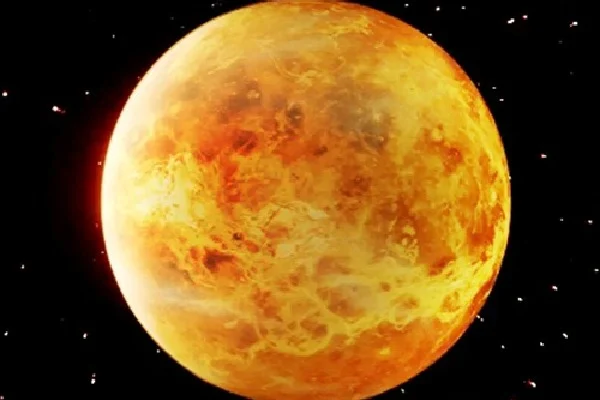A recent study, conducted by scientists from Brown University, has unearthed fascinating insights into Venus, typically known as a scorching wasteland. Their findings suggest that this celestial body might have once experienced tectonic plate movements akin to those believed to have occurred on early Earth. This revelation opens up the possibility of Venus once being a potential host for life.
By utilizing atmospheric data from Venus and computer simulations, the research team postulates that Venus likely had plate tectonics activity at some point after its formation, estimated to be between 4.5 and 3.5 billion years ago. According to their findings, this geological process could account for the significant presence of nitrogen and carbon dioxide in Venus' atmosphere. The study, which has been published in the journal Nature Astronomy, proposes that the composition of Venus's current atmosphere and surface pressure could only have arisen through a form of early plate tectonics.
Plate tectonics, a fundamental geological process for the support of life, involves the dynamic interaction of multiple continental plates, including pushing, pulling, and sliding beneath one another. On Earth, this process unfolded over billions of years, resulting in the formation of new continents and mountains. It also led to chemical reactions that stabilized the planet's surface temperature, fostering an environment conducive to life.
In contrast, Venus, Earth's closest neighbor and sister planet, took a different evolutionary path and now boasts surface temperatures hot enough to melt lead. It has long been assumed to possess a "stagnant lid" on its surface, meaning it has a single plate with minimal mobility and gas release into the atmosphere.
However, the research team challenges this assumption, suggesting that early tectonic movements on Venus, akin to those on Earth, may have occurred, although with limitations regarding the number of moving plates and their extent of movement. Interestingly, this phenomenon would have transpired concurrently on both Earth and Venus, implying that two planets in the same solar system once operated under a plate tectonic regime, which is instrumental for life as we know it.
Lead author Matt Weller, who led the study at Brown and is now affiliated with the Lunar and Planetary Institute in Houston, highlights this discovery as a pivotal step toward understanding the potential for microbial life on ancient Venus. It also underscores that, at some point in their shared history, Earth and Venus were more alike than previously believed before diverging along distinct trajectories.
The study additionally raises the intriguing possibility that the occurrence of plate tectonics on planets might be a matter of timing, and consequently, the potential for life as well. Study co-author Alexander Evans, an assistant professor of Earth, environmental, and planetary sciences at Brown, suggests that the notion of tectonic states could be more nuanced than a simple binary distinction of true or false, and that transitions between tectonic states might be relatively common in the cosmos. This concept has implications for the understanding of other celestial bodies, such as Jupiter's moon Europa, which exhibits evidence of Earth-like plate tectonics, as well as exoplanets in distant regions of the universe.
















